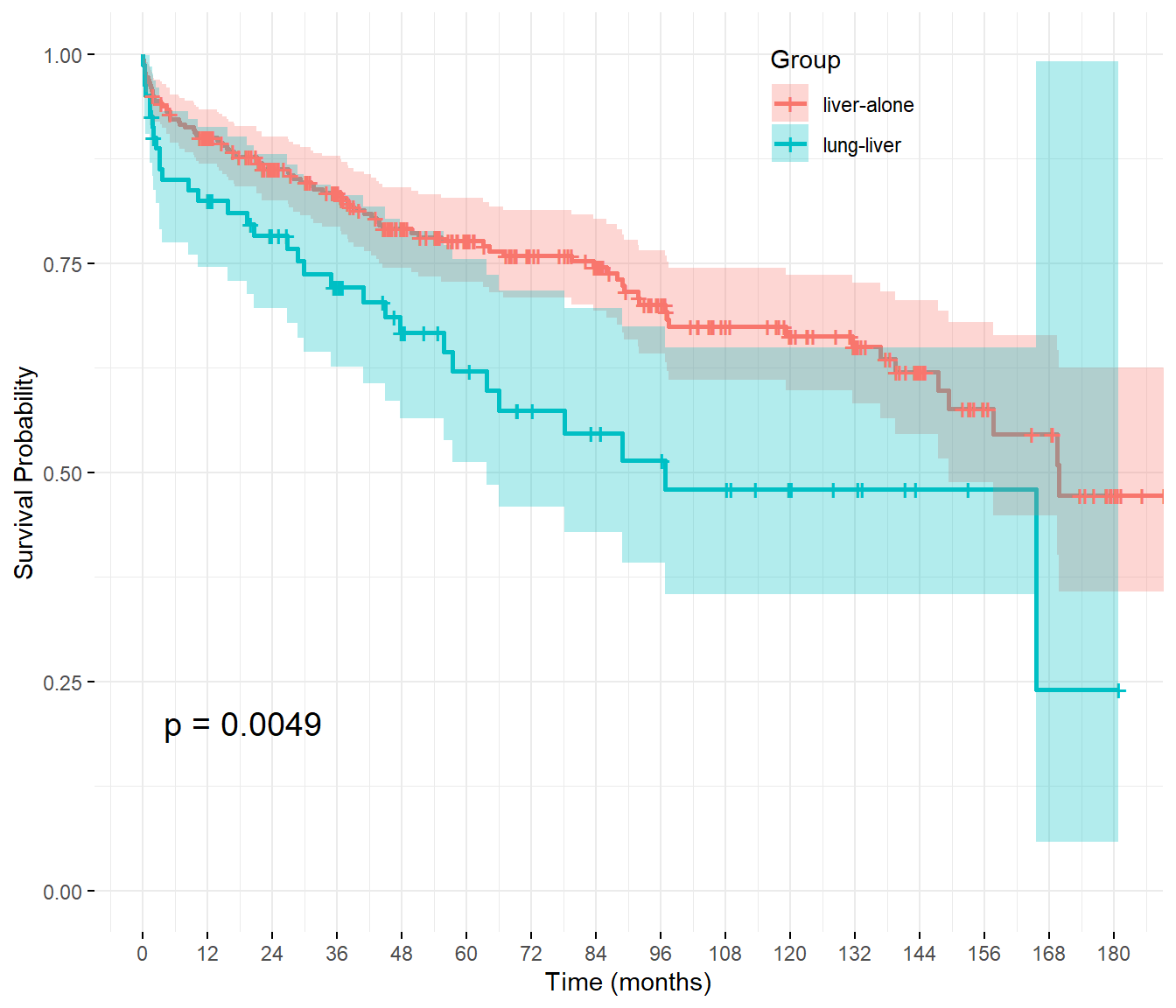Survival Following Simultaneous Liver-Lung versus Liver Alone Transplantation: Results of the US National Experience
Surgery, University of Alabama at Birmingham, Birmingham, AL
Meeting: 2020 American Transplant Congress
Abstract number: B-297
Keywords: N/A, Resource utilization
Session Information
Session Name: Poster Session B: Lung: All Topics
Session Type: Poster Session
Date: Saturday, May 30, 2020
Session Time: 3:15pm-4:00pm
 Presentation Time: 3:30pm-4:00pm
Presentation Time: 3:30pm-4:00pm
Location: Virtual
*Purpose: Although simultaneous thoracic-abdominal transplants are undoubtedly complex, there is little data to compare the post-transplant survival between lung-liver transplant (LLT) and liver alone recipients. This study was undertaken to determine if survival after LLT is inferior to liver-alone transplant.
*Methods: United Network for Organ Sharing data for patients who underwent LLT from 2002-2017 was analyzed. LLT recipients were matched 4:1 to liver-alone recipients (n=324) by propensity score matching on donor and recipient variables. Covariate balance after matching was assessed by standardized difference, with standardized difference >0.1 in absolute value indicating significant residual difference between groups. The primary endpoint of patient survival was analyzed in the matched cohort, controlling for covariates with residual imbalance.
*Results: There were 94 patients who underwent LLT, of whom 11 were excluded from comparison with liver-alone recipients due to also receiving either simultaneous heart or pancreas grafts. The most common indication for LLT was cystic fibrosis (n=47). The LLT recipients were majority male (56%), and Caucasian (93%) at a mean age of 34.7 (16.6) years and a mean calculated model for end-stage liver disease (MELD) score at transplant of 11.2 (5.4). After matching, the mean MELD score at transplant was 11.4(5.6) for the LLT group vs. 12.9(11.3) for the liver-alone recipients. After matching, the liver-only recipients more commonly received organs from regional (8.3% vs 6.2%) and national (7.4% vs 4.9%) donors, while the LLT group had significantly higher rates of pretransplant dialysis (1.2% vs 0.6%), Hispanic recipients (2.5% vs 1.5%), female donors (42% vs 37%), and donors whose cause of death was a CNS tumor (1.2% vs 0.3%). Post-transplant survival was significantly worse for LLT vs. liver-alone recipients in the matched cohort(figure). The inferior survival seen with LLT persisted after adjusting for covariates with residual imbalance after matching (HR 1.92, 95% CI 1.26-2.92; p=0.003).
Figure: Patient survival in a propensity matched cohort of liver-lung vs. liver alone transplant recipients.
*Conclusions: LLT has significantly worse survival compared to liver-alone transplant. In an era of increasing organ shortage, such combined transplants should be limited to extremely highly selected cases.
To cite this abstract in AMA style:
Purvis J, Mcleod MC, Orandi BJ, Eckhoff DE, Locke JE, Cannon RM. Survival Following Simultaneous Liver-Lung versus Liver Alone Transplantation: Results of the US National Experience [abstract]. Am J Transplant. 2020; 20 (suppl 3). https://atcmeetingabstracts.com/abstract/survival-following-simultaneous-liver-lung-versus-liver-alone-transplantation-results-of-the-us-national-experience/. Accessed December 18, 2025.« Back to 2020 American Transplant Congress

